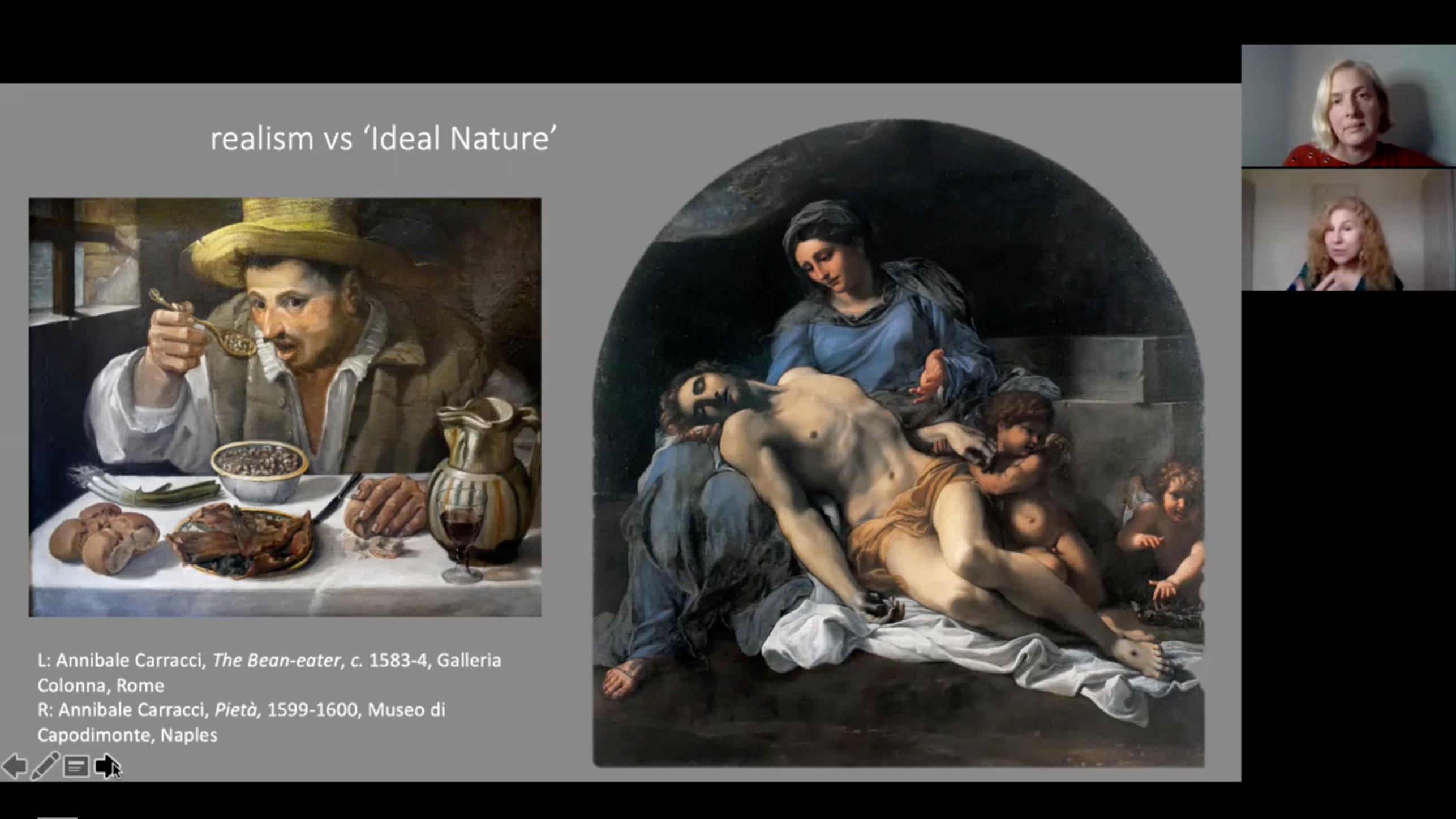
News Archive 2021
From Bust to Zoom: reflections on a year (and a bit) of online learning in Short Courses
Author: Anne Puetz, Head of Short Courses
When the UK went into lockdown in March 2020, our Short Courses department entered the uncharted waters of online learning. Having previously taught exclusively in person, we created our remote learning from scratch. Now, looking back over more than a year of online teaching, and listening to the reactions of our students and lecturers, what wider insights into remote adult learning have emerged, from both sides of the screen?
It takes a team to teach an online course…. Most essentially, online adult learning needs a lot of ‘backroom support’ in digital event production, technical ‘hand-holding’, and excellent communications. Students aren’t interested in broadcast-quality professionalism – the odd cluttered background or intruding family member can inject a charming human touch – but they rightly expect crisp sound, sharp images, and above all, clear instructions and very straightforward technical procedures.
The degree to which even the self-confessed technophobes among our lecturers and students have become comfortable with Zoom, YouTube and the VLE (our online education platform) is a tribute to my colleagues Oliver and Jackie. We also benefited greatly from the Courtauld community’s collective researches into fundamental questions of copyright and intellectual property in online learning.
Online learning doesn’t replace the ‘real thing’ – but it has advantages of its own. Online learning cannot fully replicate the human interaction in a lecture or seminar room that many of our Short Courses students – and lecturers! – enjoy. But we should embrace the unique advantages of the online medium that allow us to do what cannot (easily) be done ‘in real life’: bringing together a global panel of experts, for instance, as for our forthcoming lecture series, Napoleon Bonaparte and the Visual Arts, or collaborating with an ensemble of classical musicians, as we did for our interdisciplinary course Modernism in Art and Music.
In online form, our international Study Tours are able to deliver the deep historical, literary, and musical contexts that help evoke each destination’s vanished culture, even as we miss their actual physical presence.
Above all, our students suggest that the learning outcome for them is potentially greater. Pre-recorded lectures allow participants to study in their own time and at their own pace, and to go back over material repeatedly. Adding to this the ample provision on our VLE for independent study, through reading and hand-out materials, and discussion forums, the online model gives scope for a high level of serious immersion in art history.
Like an actor on an empty stage….From the lecturer’s perspective, there’s no doubt that teaching Short Courses online is harder than teaching face-to-face. It takes effort to be engaging when you are speaking to an empty room, and it is difficult to know how to pitch a course without seeing your students’ reactions. I am not surprised that some of us spent hundreds of hours writing and recording a new course, or that experienced lecturers were left in tears of frustration at a botched (or worse, missed!) recording. Pre-recording lectures gives greater opportunity to students to test your thoughts. With this in mind, I’m sure we all reviewed our material, not only fact-checking each lecture, but sometimes profoundly rethinking its content and structure, and the assertions we have made about art for years. Hard work, but I’d say that our Short Courses are all the better for it.
From cacophony to conversation: One of the difficult things to get right in online learning is giving students active participation in the course. For our Short Courses, we put a lot of thought into the relationship between pre-recorded content and its examination in live Zoom ‘seminars’, into maximum group numbers, the use of tools such as discussion forums and break-out rooms, and into the balance between free discussion and structured object case studies. It is an ongoing project of fine-tuning, but I am delighted by the quality of the exchanges our lecturers have already achieved.
Global, but also ‘intimate’: What has been wonderful, and sometimes profoundly moving, is the extension of our audiences far beyond those who are able to join us on campus. Short Courses have always had international students, but over the past year we’ve acquired a sizeable global audience, and have enabled others – with limited mobility and other health concerns, or caring responsibilities – to study with us for the first time. In a world that has recently been characterised by some ugly nativist impulses, the delight expressed by our students in working alongside “people from all over the world” has been truly heartening. Simultaneously, a number of people have described online learning as a “more intimate” experience than in-person learning, and as more suitable to the introverted and those without previous experience of academia: for some, studying online at home has provided a welcome opportunity to build up their confidence for future participation in the classroom.
What’s next? Our postbag contains appeals from those pining to return to face-to-face education, and a somewhat larger number of pleas to retain online learning in the future. For us, there’s no doubt that we’ll continue with both. While we cannot wait to be in a buzzing lecture theatre – and in front of works of art – again, we’re equally keen to maintain our new relationship with students from around the globe, and to build on what we’ve already learnt about Continuing Education from the online experience.
